Assets
What is an asset?
In Loome Publish an asset is any object or report pulled from a data source.
Some examples of assets are Power BI reports, Cognos reports, Crystal reports, SSRS reports, SSAS Cubes, Datazen dashboards, Kepion forms, and websites.
Asset board menu
To the right of the page you will find the asset board menu.
Sort
Choose how to sort your assets.
The options available are:
- Alphabetical
- Popular
- Recency
Layout
Choose how to view your assets.
The options available are:
- Card View
- List View

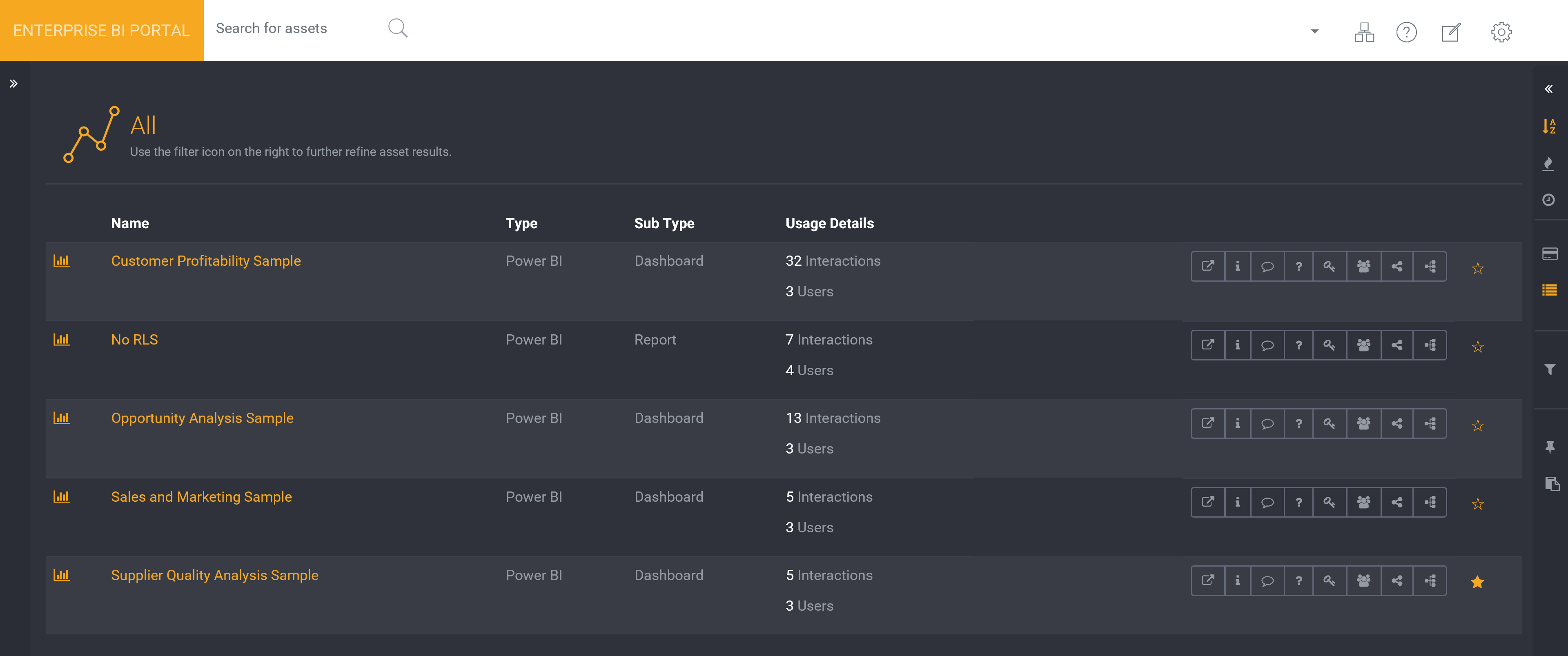
You can select asset sorting options in the right hand navigation menu and can select from Alphabetical, Popular and Recency. You can also select to view your assets in Card or List View here, and select slicers to filter your assets. You can also select a view or sorting option without expanding the navigation panel by clicking on its icon.
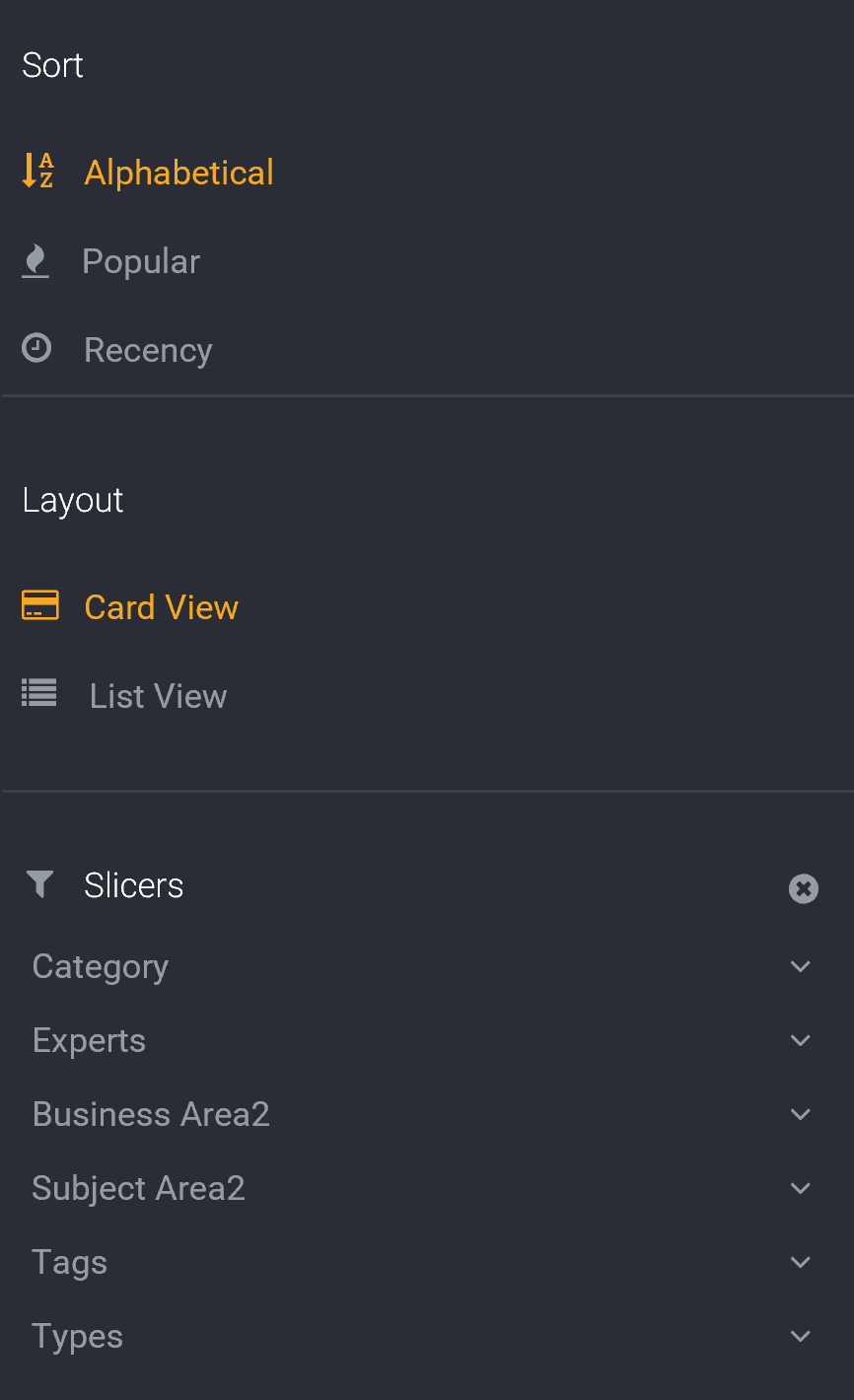
Navigation terms can be viewed in the left hand navigation and it will expand by clicking the top left arrow.
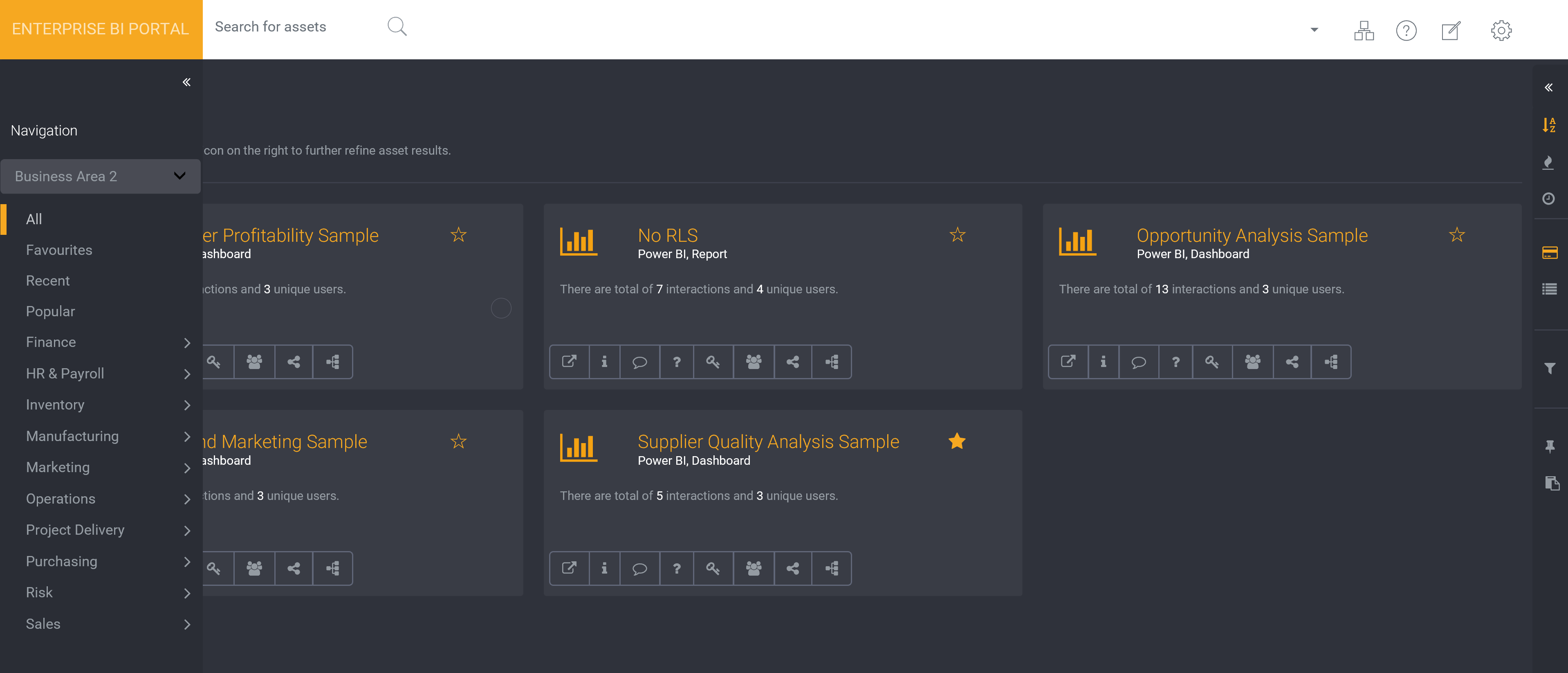
Slicers
Asset slicers will appear here. Select the attributes you would like to filter your assets by.
What can I do with an asset?
You can view the asset simply by clicking on the asset title link or the Open button.
The asset will open up in either a new tab or embedded into the portal.
If the asset is embedded, the navigation menu will be minimised.
You can view the asset menu simply by clicking on the right-hand navigation arrow at the top right of your page.
If embedding is enabled, the asset actions - Information, Discussions, Help, Open, Full Screen, Share, Network Map, Usage and Audience links will display in the navigation pane on the right.
You can view the embedded asset in full screen mode simply by clicking on the Full Screen option. Press the ESC key to exit the full screen mode.
To go back, click Back.
Information
To view the asset metadata, click on the Information button. A pop up will display showing the details for the asset.
Click Edit to add or modify asset metadata.
Click the bin icon to delete the asset. A confirmation will appear.


Discussions
You can participate in discussions regarding a particular asset.
You can start a new discussion or reply to an existing discussion thread.
To start a discussion, click New Discussion to add a new thread.
Enter a Subject (required). This is the discussion topic.
Enter a Description (required).
Tag Audiences.
Select a Discussion Type from the list (required).
Choose a Relevant Period if applicable.
Once done, click Save.
To make changes to a discussion, click Edit to modify the discussion details.
To see replies, click View.
You can add to the discussion by clicking on Reply.
Enter your Description (required), then click Post.
You can choose to opt in or opt out of discussion notifications.
Click on a discussion thread.
Tick the ‘Subscribe to this discussion?’ box to opt in and receive notifications every time an update has been made to the particular discussion thread. Untick this box to opt out of discussion notifications for this thread.
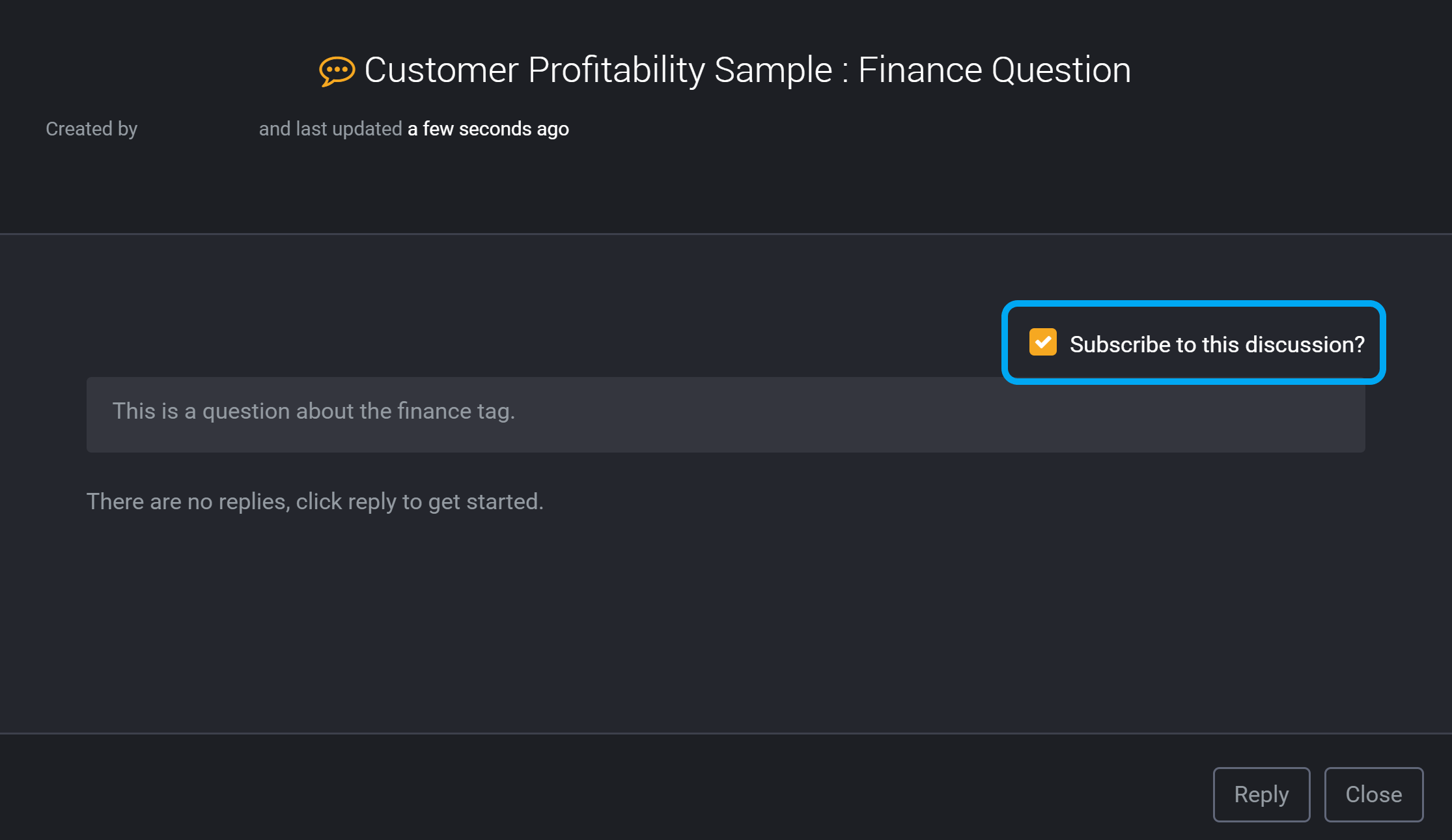
By default the user who creates the discussion post is automatically opt in to notifications related to that discussion thread.
Tag Users in Discussions
You can tag another user in a discussion, and this will send a notification to that user to inform them about the discussion.
When writing a reply, type @ followed by a user’s name to tag that user.
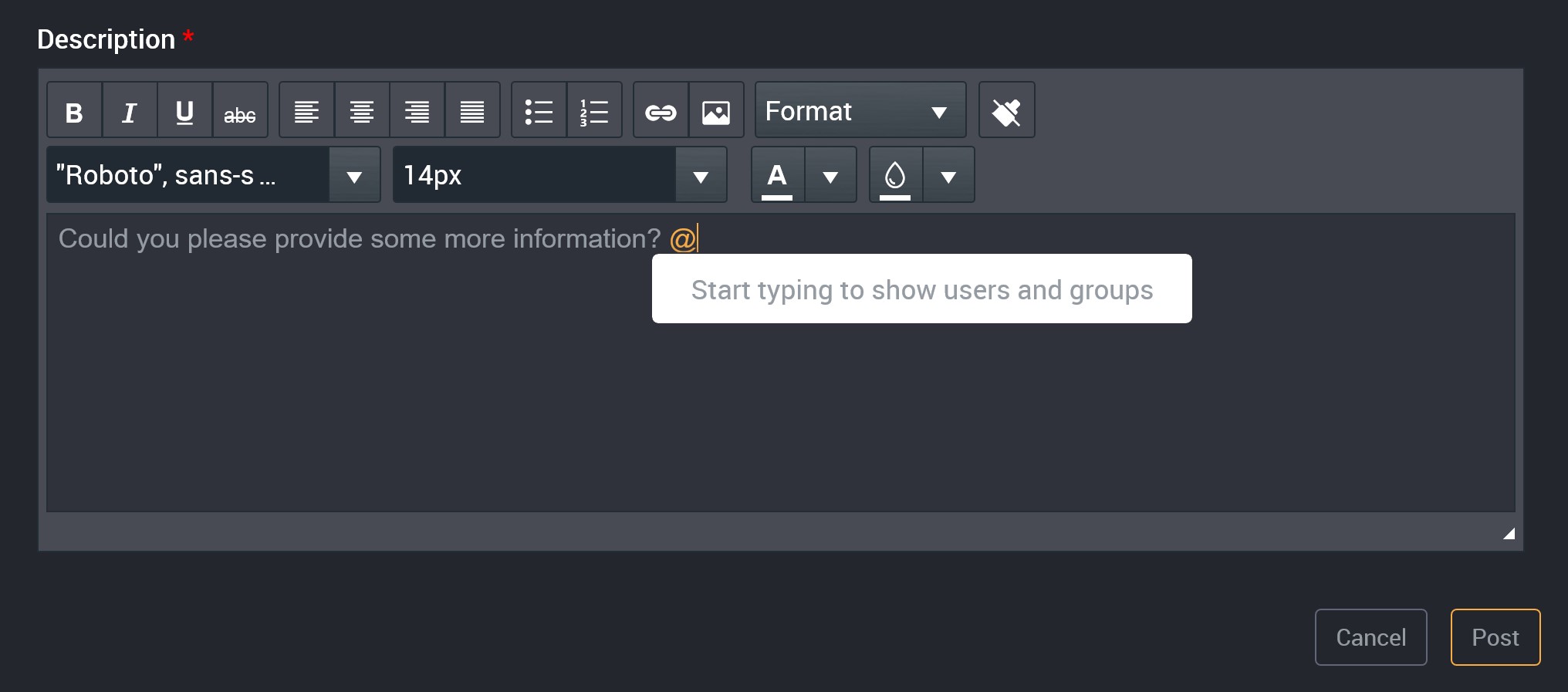
While typing it will provide you a list of users and groups that match the name you have written. You can select a user from the list and it will tag them in the discussion.
Post your reply and the tagged user will be notified.
Help
You can submit a help desk ticket for an asset.
For example, if you’re having issues viewing the asset you can raise a help desk ticket to request permissions to view the report.
Click Help.
Enter a Title (required) for the help desk ticket.
Select a Request Type (required) from the list.
Enter a Description (required).
Click Create.
Open
Clicking on Open will open up the asset in a new tab.
Usage
Usage will display asset usage information such as user name, action type, and logged time.
You can save or download this information simply by clicking on the Download button.
Audience
This will display the audience associated with the asset termsets.
Share
You can share a particular asset by clicking on the Share button.

This will provide the option to either copy the asset’s link using the Copy link button or email the link to a user that you can find by typing their name into the empty field.
You can select multiple users by adding each user, thus creating a list of users that it will then share the asset with.

Network Map
A visual network map of the asset will display. (Refer to the Network Maps section of this guide here)
Full Screen Mode
You can view the embedded asset in full screen mode simply by clicking on this option. Press the ESC key to exit the full screen mode.
Alternatively, you can click the X icon which appears at the top of the screen when you hover over it.